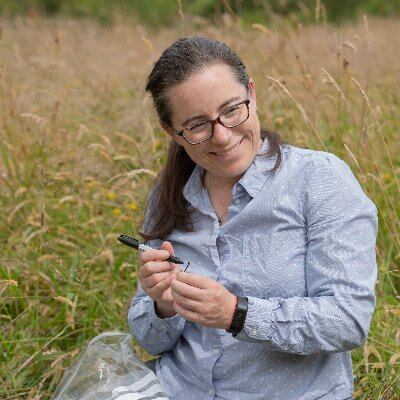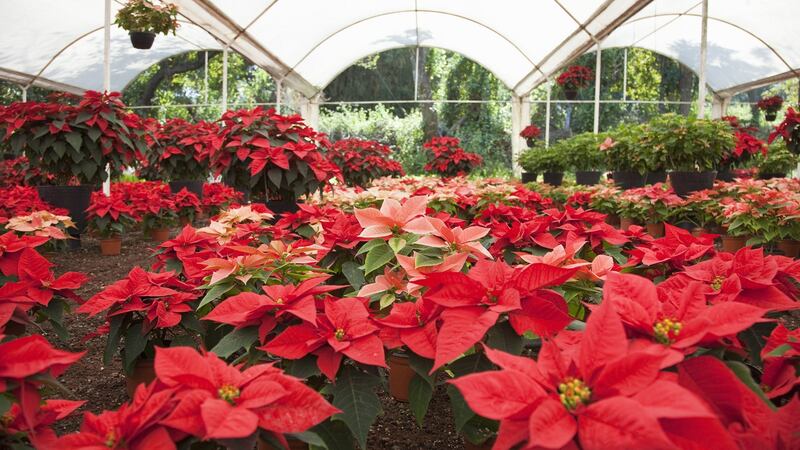Poinsettias are everywhere at Christmas with their deep red “flowers” cheering up lounges and thronging the aisles of supermarkets.
Wild poinsettias are utterly different. In their native Mexico they are woody, straggly shrubs, up to two or three metres tall and live for years. How, then, are they persuaded to grow as short, many-stemmed, luxuriant plants that seem to exhaust themselves and die over the course of a month or two?
It is a grisly ecological tale involving sap-sucking insects, parasitic bacteria, cloning, grafting and hormone manipulation. Ecological manipulation of the growth form of the plant is responsible for the world’s most economically important potted plant industry.

Poinsettia is a member of the hyper-diverse spurge or euphorb family and its Latin name, Euphorbia pulcherrima, means most beautiful spurge. It grows wild in Central America and the genetic roots of the cultivated poinsettia were traced back to a population in central Mexico where the American ambassador to Mexico collected specimens and sent them back for cultivation in the United States in the early 1800s.
Poinsettias were immediately recognised for their decorative value in America and Europe and plant breeders set to work on gilding the lily by maximising the beautiful deep red modified leaves (bracts) that surround the tiny true flowers.
Common symptoms of phytoplasma infection are stunted growth and 'witch's broom'
Grafting is a common technique used to propagate plants to modify their growth form. A root-stock plant will grow strong roots whereas the decorative parts come from a different plant which is grafted on to the root-stock to produce shorter, faster developing plants. All individuals of a particular variety of Poinsettia are cloned and grafted, and so are genetically identical.
Zombie drama
The most commonly cultivated varieties of poinsettia are infected with a type of bacteria called a phytoplasma. This is where the story veers away from Christmas cheer and into a zombie drama.
Phytoplasmas live only inside plants, they cannot be cultured outside of their hosts and cause several different plant diseases by manipulating the growth and hormone signals inside, and outside, the plant.
Common symptoms of phytoplasma infection are stunted growth and “witch’s broom”, a dense mass of shoots growing from a single point resulting in a broom like appearance. These symptoms explain the short and densely branched appearance of cultivated poinsettias compared to their straggly wild brethren.
Phytoplasmas are spread from plant to plant by sap-sucking insects, like leaf-hoppers. In Ireland leaf-hoppers can be found amid a mass of bubbly "cuckoo spit". The cuckoo spit is the remains of the watery xylem sap that they suck and excrete around themselves to provide a moist and protected micro-habitat, after extracting the nutrients they need.

While sucking up the sap they also suck up phytoplasmas which reproduce inside the insects and migrate to their salivary ducts, ready to be injected into the next suitable host that the insect finds. It is in the phytoplasma’s interest to encourage sap-suckers to visit suitable plants.
The phytoplasma disrupts jasmonate signalling to make the plant more susceptible to passing insects
The phytoplasma has more cards up its sleeve: it causes the plant to reduce its production of a chemical called jasmonate. This chemical is a plant hormone which, like an expensive perfume, diffuses into the air around the plant and can even be detected by insects and other neighbouring plants. Jasmonate is a signal for plants to increase their defence mechanisms when under attack by insects and pathogens.
Sap-suckers
An insect that detects jasmonate knows that the plant is likely to be well defended and may choose to avoid it. Neighbouring plants may detect jasmonate from the attacked plant and use that signal to increase their own defences, to avoid damage from the sap-suckers.
The phytoplasma disrupts jasmonate signalling to make the plant more susceptible to passing insects and therefore increase its chances of being sucked up and transmitted by the sap-sucker.
It just so happens that we humans like the look of phytoplasma infected poinsettias and our cultivation techniques, grafting and cloning, increased the probability of phytoplasma infected plants persisting.
Most poinsettias die shortly after the Christmas season because their tiny pots run out of nutrients, perhaps if you look after yours it might throw off the shackles of the phytoplasma and grow tall and free like its Mexican ancestors. Feliz Navidad!







